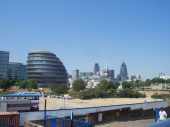
Nick Gibb, the Schools Minister, has revealed that buildings at 52 schools in England faced the potential of sudden collapse due to unsafe concrete.
Safety measures have now been implemented at these critical-risk schools. Additionally, over 100 other schools, previously thought to be at lower risk, have been instructed to close areas with this concrete material until safety measures are in place.
This decision follows the collapse of a beam that had been deemed safe, causing significant concern among school administrators.
Headteachers are now working tirelessly to devise alternative plans just days before the start of the new term. Some students have been informed that they will be learning remotely, in temporary classrooms, or at different schools.
Despite this critical situation, the government has not yet provided a timeline for publishing a list of affected schools, a move that has garnered criticism from the Labour Party.
As of now, it is uncertain how many schools have been forced to fully close, but the number could be as high as 24.
A total of 156 schools have been identified as having reinforced autoclaved aerated concrete (RAAC) since 2022. Out of these, 52 were categorized as critical risk, with immediate safety measures already implemented.
Responding to queries about whether structures in these 52 schools could have potentially collapsed, Minister Gibb stated, "Yes, and that's why we took action."
An additional 104 schools with confirmed RAAC were considered non-critical. While these schools had previously been instructed to develop contingency plans in case of closures, they were now directed to close affected buildings and rooms unless safety measures were in place.
The Department for Education (DfE) has stated that a "minority" of schools may need to fully or partially relocate to alternative accommodations while these measures are installed. Unfortunately, there is no set timeline for the replacement of the problematic material, which was commonly used until the mid-1990s.
Currently, there are over 20,000 schools in England.
This development has impacted two primary schools in Bradford, Crossflatts, and Eldwick. Parts of these schools have been closed to pupils after the unsafe concrete was discovered.
As a result, some students at these schools will be taught in temporary classrooms, and parents are grappling with last-minute changes.
Bridget Phillipson, the Shadow Education Secretary, called on the government to reveal the full extent of the problem and communicate directly with parents.
Education Secretary Gillian Keegan assured that affected schools would contact parents directly, and she emphasized plans to minimize disruptions to student learning while providing the necessary funding and support to address RAAC-related issues.
Kevin Bentley, the County Council Leader in Essex, expressed concern over the abrupt notice that 50 schools had RAAC. He predicted that three of these schools may need to close, posing a significant challenge so close to the start of the term.
Teachers' unions criticized the DfE for making this decision just days before the return to school, describing it as "disgraceful" and indicative of government incompetence.
In June, the National Audit Office (NAO) classified the risk of injury or death from a school building collapse as "very likely and critical."
RAAC is a lightweight type of concrete used extensively from the 1950s to the mid-1990s, primarily in flat roof panels but also occasionally in pitched roofs, floors, and walls, with a typical lifespan of about 30 years.
The DfE had sent a questionnaire to schools in 2022 inquiring about confirmed or suspected RAAC cases in their buildings. Schools that confirmed such cases were then assessed by DfE-commissioned engineers.
Schools that suspect RAAC but haven't responded to the survey are encouraged to do so through the DfE's website.
Corpus Christi Catholic Primary School in Brixton, South London, had to relocate some pupils after RAAC concrete was discovered in the roof of part of the junior site. While the situation is disruptive, parents are relieved that their children's safety remains a top priority. Photo by HM Government, Wikimedia commons.






































